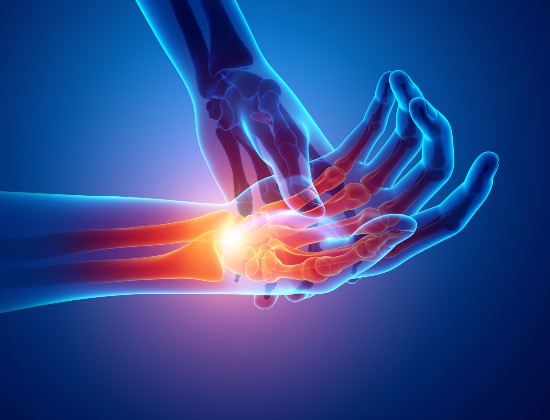Sprained wrist
Spraining your wrist means that you have damaged one of the ligaments in the wrist, usually by bending or forcing it out of place.
The severity of a sprain is usually graded according to the injury:
- Grade 1 sprains are when the ligament is stretched rather than torn
- Grade 2 sprains can involve a ligament being partly torn, which can affect your range of movement
- Grade 3 sprains are when the ligament is torn, sometimes fracturing the bone as it tears (avulsion fracture). Some wrist ligament tears can cause long term instability of the wrist and ultimately arthritis.
Causes
Wrist sprains are often caused by falling onto an outstretched hand, for example when ice skating or during contact sports such as football or rugby.
Symptoms
These include pain, swelling, bruising, and tenderness. It’s important to see a doctor as soon as possible to avoid long term problems including limited movement.
Diagnosis
After a discussion of how the injury happened, the doctor will examine your wrist and back up a diagnosis with X-rays to see if any bones are broken, and possibly an MRI or CT scan to assess damage to the ligaments.
Treatment
Applying ice (crushed in a towel) several times a day, along with resting the wrist and elevating it (raising it above the heart) can help, along with taking anti-inflammatory medication if advised by your doctor.
Non-operative treatment: this includes wearing a splint or elasticated bandage and gently exercising the wrist to help build strength and flexibility.
Surgery: if you have had a Grade 3 sprain, you may need surgery to reconnect the ligament to the bone. Some ligament tears are crucial to detect and repair early, otherwise late damage and arthritis can develop. Afterwards you will usually be given exercises to rebuild strength and increase your range of movement while you recover (this usually takes around six weeks).
Important: This information is only a guideline to help you understand your treatment and what to expect. Everyone is different and your rehabilitation may be quicker or slower than other people’s. Please contact us for advice if you’re worried about any aspect of your health or recovery.


